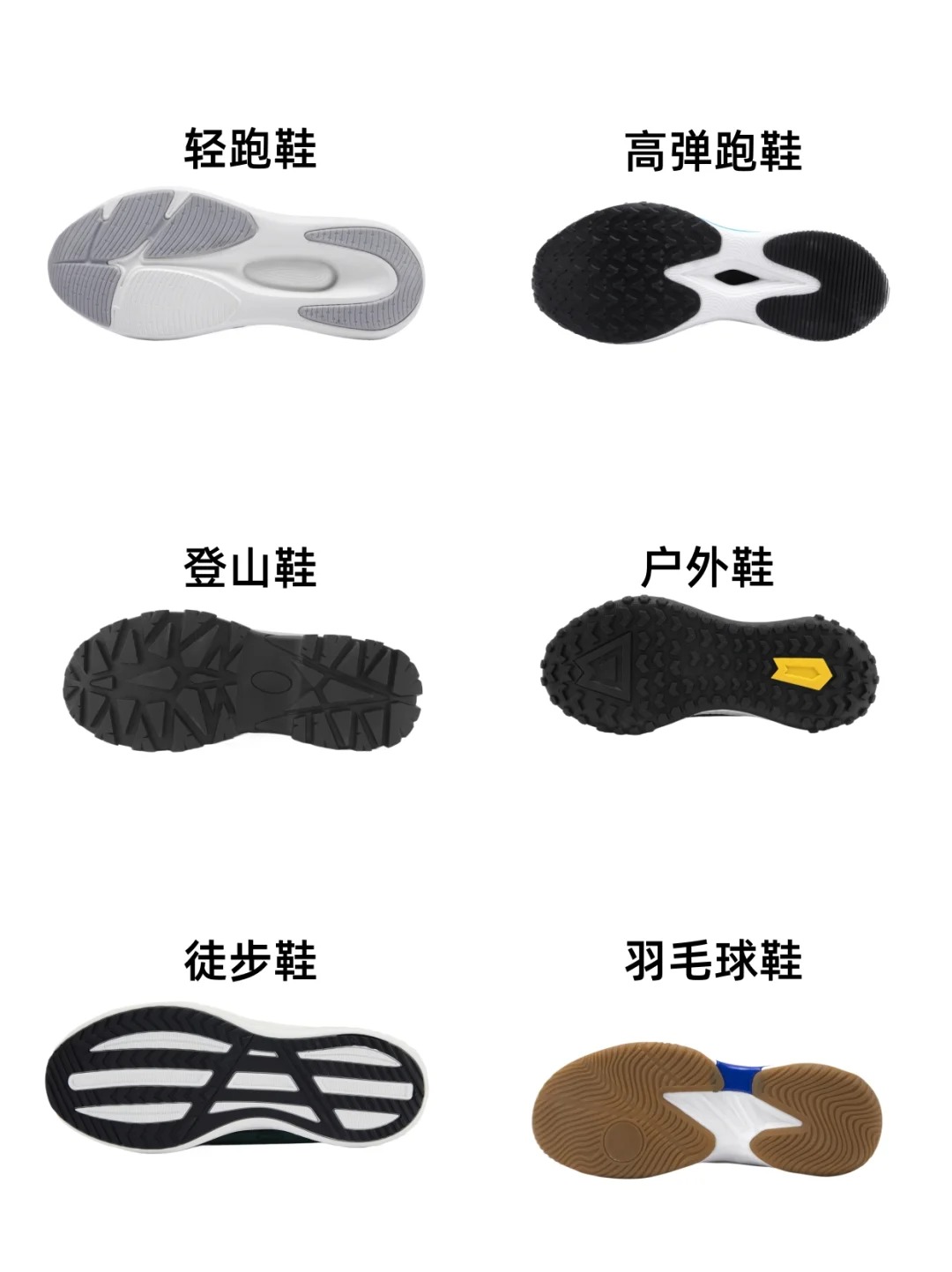Sole Material
Reading times:69 Update time:2025-06-11
Common shoe soles revealed
️⃣ Rubber sole: Rubber, as a high molecular compound, is made of natural rubber or synthetic rubber. It has excellent elasticity, wear resistance, resistance to bending, compression and softness, and can also exert a certain shock absorption effect, so it is widely used in the sports shoe industry.
️⃣ EVA sole: EVA sole is formed by one-time foaming of ethylene and vinyl acetate copolymer, with many advantages, such as lightweight, good elasticity, good flexibility, not easy to wrinkle, and excellent coloring ability, which can easily cope with various climates.
PU sole: PU sole belongs to low-temperature formed sole. It is very lightweight, but it must not come into contact with water. When it comes into contact with water, it will undergo a chemical reaction and be corroded layer by layer.
MD sole: MD sole, also known as PHYLON sole, commonly known as Feilong sole. MD is the abbreviation for MOLDED (compression molding), which belongs to EVA secondary high-pressure molded products. This type of sole is lightweight, has excellent elasticity and shock resistance, and its hardness is controlled by the foaming temperature.
TPR sole: TPR sole is a thermoplastic rubber sole. When TPR material is used on the sole, the sole becomes lightweight, comfortable, with excellent anti slip performance and a moderate price.
PVC sole: PVC sole is the abbreviation for polyvinyl chloride resin, and the sole is usually relatively hard. Generally suitable for making sports shoes, rain boots, work shoes, and so on.
In addition to the above, there are various types of soles such as fabric soles, leather soles, natural rubber soles, and chemical synthetic rubber soles. Different types of shoe sole materials have different characteristics and are suitable for different occasions and needs

